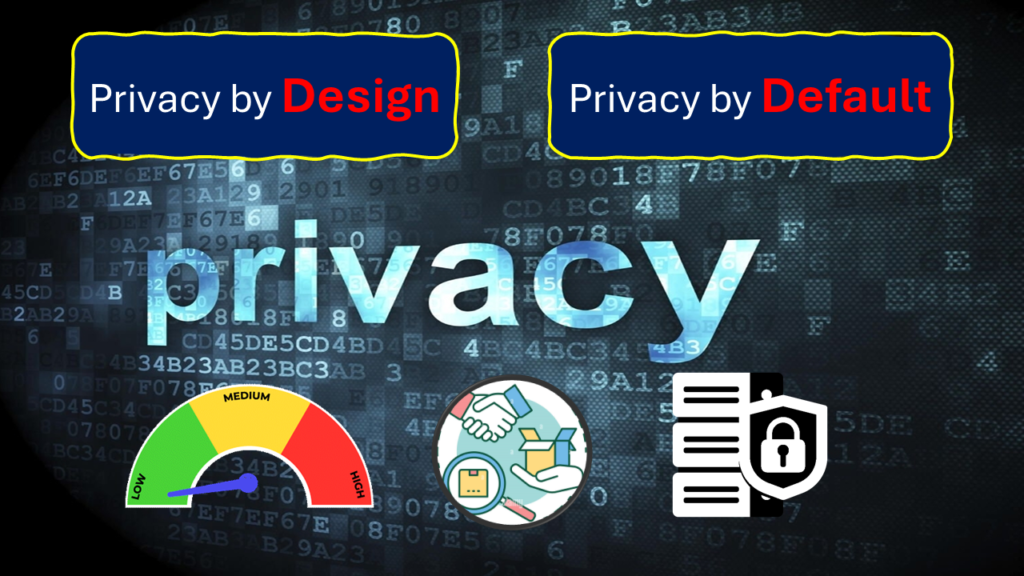In today’s digital age, where our personal information permeates every interaction online, data security is paramount. Two crucial concepts that ensure data protection from the very beginning are privacy by design and privacy by default. By integrating these principles into the development of any product or service, we can minimize data security risks and build trust with users.

What is Privacy by Design?
Privacy by design is a proactive approach that emphasizes embedding data protection measures into the design phase of a system or service. This goes beyond just technology; it encompasses business practices and operational decisions as well.
Imagine this: A company building a new messaging app prioritizes privacy from the outset. This might involve features like:
- End-to-end encryption for secure conversations.
- Minimal data collection, focusing only on what’s essential for the app’s functionality.
- User control over data, allowing users to manage how their information is stored and shared.
By integrating these features, the company builds privacy protections right from the start.
The 7 Principles of Privacy by Design
- Proactive not Reactive: Focus on preventing privacy issues, not just fixing them later.
- Privacy as the Default Setting: The most privacy-protective settings should always be the default.
- Privacy Embedded into Design: Consider privacy throughout the entire design process.
- Full Functionality – Positive-Sum, Not Zero-Sum: Privacy shouldn’t come at the expense of usability.
- End-to-End Security: Data protection should extend throughout the entire data lifecycle.
- Visibility and Transparency: Organizations should be clear about how they handle user data.
- Respect for User Privacy: Privacy by design prioritizes user control and preferences.
Main Requirements of Privacy by Design
- Data Minimization: Collect only the data absolutely necessary for the service.
- Purpose Limitation: Use data only for the stated purposes and nothing else.
- Built-in Security: Design systems with robust security measures to safeguard data.
- Transparency: Be clear about data collection, use, and protection (detailed in a privacy policy).
- Proactive Accountability: Organizations must actively prevent privacy risks.
What is Privacy by Default?
Privacy by default requires organizations to set the strictest privacy-oriented settings as the norm. This ensures data minimization, meaning only the data essential for specific, lawful purposes is processed.
For example: A social media platform might make user profiles private by default, requiring users to actively make them public.
To comply with privacy by default, organizations should also consider:
- Strictest Privacy Options as Default: The most privacy-protective settings should be automatically enabled.
- Consent for Additional Data Processing: Don’t process extra data without user consent or a legal basis.
- Reasonable Data Retention: Store data only for as long as necessary for its intended purpose.
- Data Anonymization/Deletion: Automatically delete or anonymize personal data once its purpose is fulfilled.
- User Control and Transparency: Provide users with clear options to manage their data and understand processing activities.
- Avoiding “Dark Patterns”: Don’t use manipulative tactics to obtain user consent, like in cookie banners.
Conclusion
Privacy by design and privacy by default are fundamental for building trust and ensuring user data security. By incorporating these principles from the very beginning, organizations can create products and services that respect user privacy while maintaining functionality.